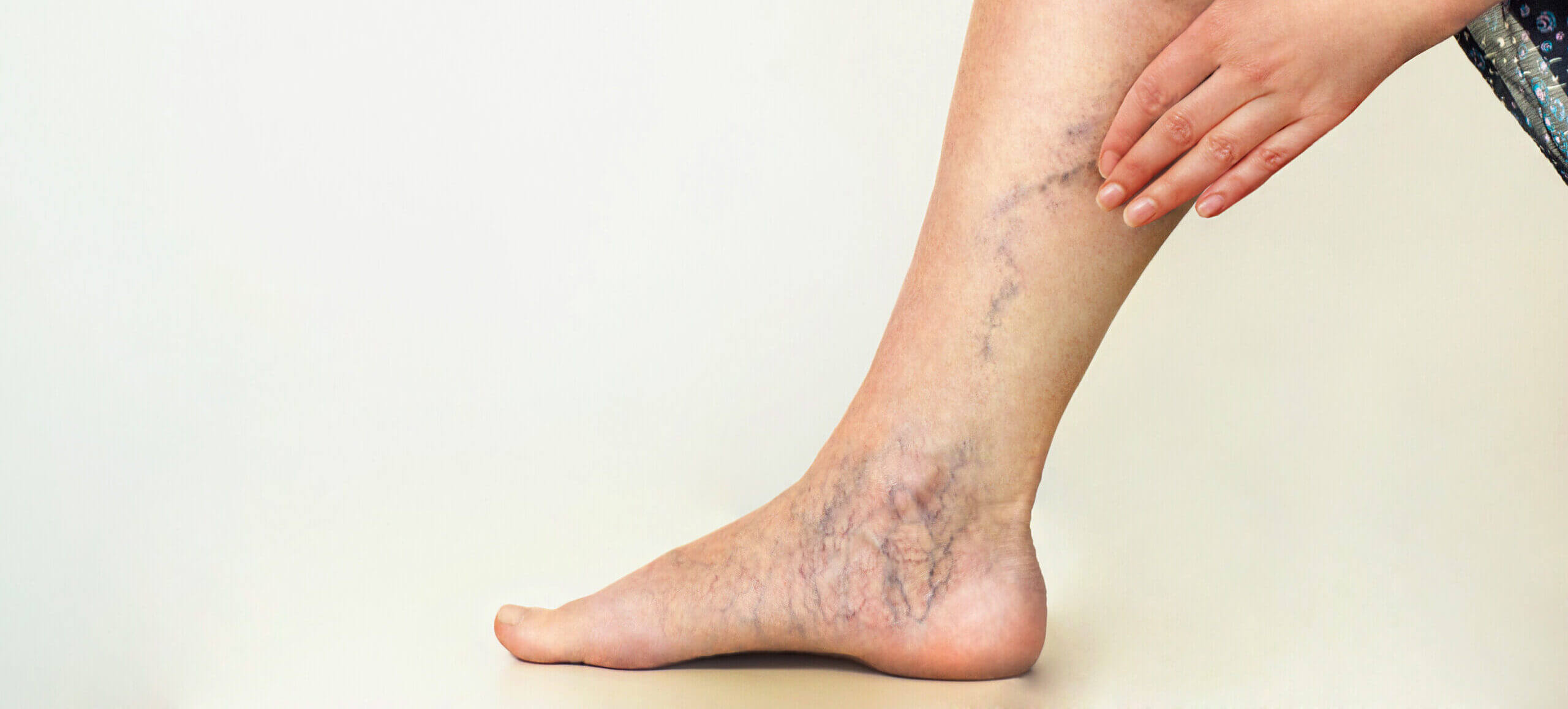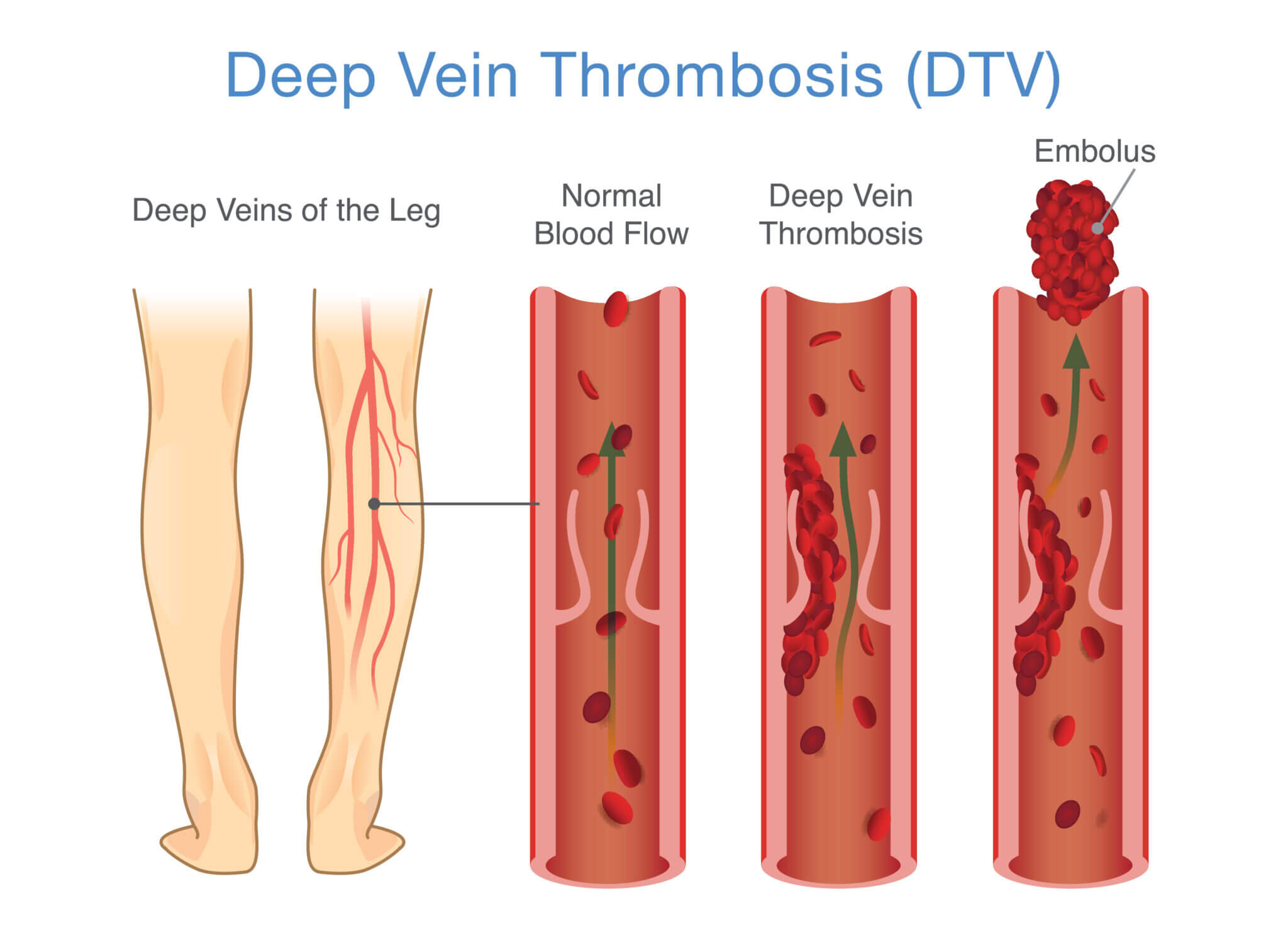Deep vein thrombosis or DVT is a serious condition that occurs when a blood clot (thrombus) forms in one or more of the deep veins in the body. A blood clot is a clump of blood cells caused by the slow movement of blood or vein damage. It often forms in one of the legs but also the thigh, pelvis, and other parts of the body.
DVT is a life-threatening condition that comes with symptoms of swelling, pain, tenderness, and more. However, these symptoms alone don’t make the condition that serious. DVT is dangerous for human health because of the overall damage it can cause to the system. The blood clot tends to damage deep veins and sometimes even travels through the bloodstream, blocking the blood flow.
Luckily, deep vein thrombosis can be treated and prevented in several ways. It’s just crucial to keep yourself well-informed about the condition and perform the necessary steps to protect yourself. In the following article, we give you all the information about deep vein thrombosis, including how you can treat and avoid it.
Deep Vein Thrombosis Symptoms
The tricky thing about DVT is that it doesn’t always show symptoms. However, sometimes the symptoms of deep vein thrombosis are there but less noticeable, and people fail to recognize them. Therefore, if you notice any of the following signs, contact your doctor immediately:
- Sudden swelling in your leg or arm
- Pain or soreness when walking or standing
- Warmth in the painful area
- Enlarged veins
- Red or blue-colored skin
DVT sometimes comes without warning until the blood clot breaks free and gets stuck in the blood vessel in the lungs. As we mentioned above, this causes a serious condition called pulmonary embolism, and can develop these symptoms:
- Shortness of breath
- Chest pain that increases with each deep breath
- Coughing up blood
- The feeling of dizziness or fainting
- High heart rate
If you notice any signs of pulmonary embolism, seek immediate medical attention.
What Causes Deep Vein Thrombosis?
Deep vein thrombosis causes are various. In fact, anything that prevents proper blood circulation can cause clots, especially a vein injury, surgery, limited movement, and more. Risk factors mainly include:
- Genetics. Family history makes people more or less likely to develop certain medical conditions. The same applies when it comes to deep vein thrombosis. If one of your family members has DVT, you run at a higher risk of getting it. However, you do not automatically inherit DVT. Even if you do get it from your family genes, the condition on its own may not cause blood clots unless combined with some other factors.
- Immobility. One of the main causes of deep vein thrombosis is immobility. When you remain still for long periods, your muscles don’t work to enhance blood circulation but rather lower it down. That can increase the risk of blood clots forming in the veins. Potentially risky situations are those coming from long sitting periods, especially when people are recovering from surgeries or going through pregnancy and other similar conditions that require resting. Sitting in the office, car, train, or plane is risky as well.
- Pregnancy. Pregnancy itself can increase the pressure in the veins and increase the risk of blood clots, especially when combined with an inherited DVT condition.
- Medications. Some medications can influence blood circulation and cause clots, especially birth control pills and drugs for hormone replacement therapy.
- Injury and Surgery. Damage to the vein can cause a blood clot to form. This can occur due to the injury or during the surgery.
- Heart Disease. Limited heart and lung function can lead to severe DVT consequences. Even a small pulmonary embolism can cause a lot of damage in the body that is already suffering from another disease.
- Other Conditions and Reasons. Among the other things that increase the risk of developing DVT is smoking because it directly affects blood circulation, and therefore, clotting. Being overweight also doesn’t help because it increases the pressure in the veins. People who are older than 60 are at greater risk as well, but DVT can happen at any age.
Possible Complications
Deep vein thrombosis can cause some serious complications, just like we suggested in the beginning. Pulmonary embolism, for example, occurs when a blood vessel in the lung gets blocked by a blood clot that travels from another body part. We already covered the main symptoms of this condition, so you can scroll back up and look up to it again if needed.
Another common complication that occurs after DVT is a postphlebitic syndrome. The condition arises from vein damage that reduces blood flow in certain areas. Swelling, pain and skin discoloration in the affected area are the most common symptoms.
How to Treat Deep Vein Thrombosis?
When doctors suspect DVT, they refer patients to the hospital and run an ultrasound scan. This allows them to see whether the blood is flowing normally through the affected area or not. An X-ray of the vein is also performed sometimes. It includes giving a patient the injection with a dye, so it can show the place of the blood clot.
Deep vein thrombosis treatment can vary depending on the condition of the patient. While waiting for the regular tests listed above, the patients are usually given an injection with medicines that cause blood thinning. After the condition is diagnosed, the main treatment includes giving patients certain medications. When medicines don’t work, doctors put a filter into a large vein to trap and stop the blood clot from traveling to the lungs. This is meant to prevent complications that come from a pulmonary embolism and postphlebitic syndrome.
New deep vein thrombosis treatments include breaking up and sucking out the blood clot with the use of a small tube. This action can take months of preparations, and it is recommended depending on the condition of each patient.
Deep Vein Thrombosis Prevention
If you are wondering how to prevent deep vein thrombosis, we have a few suggestions. DVT can be prevented with simple lifestyle changes. According to the already stated risk factors, it’s crucial to lead an active life and avoid certain things. You should stop smoking and lose some weight, depending on what increases the risk in your particular case. Another thing you should avoid is sitting still for long periods.
Immobility is one of the major risk factors for developing DVT, and while we sometimes can’t stay active due to our regular daily duties, there are a few tricks that can help. For example, you can flex and stretch your muscles now and then while traveling or sitting in the office. Hydratation can help as well. Drink a lot of water when sitting or lying for extended periods, and make sure to wear loose-fitting clothes.
We also suggest getting regular checkups. Your doctor will know best what you need to change in your lifestyle and keep track of every change in your body. Sometimes, even the most concerning conditions can be treated when discovered promptly.
Pacific Biomedical DVT Therapy
If you’re considering after surgery treatment that will prevent DVT caused by extended sitting, Pacific Biomedical might have a perfect device for you. The company designed a DVTherapy device, a portable pneumatic compression system, to aid in the prevention of the condition. With both hot and cold compression therapy it provides, the Pacific Biomedical’s DVTherapy is ideal for all kinds of health problems.
As we already mentioned, the main thing that prevents DVT is proper blood flow, and compression therapy helps with that. This therapy works to increase blood flow and ensure more oxygen and nutrients to the body, which is essential for proper functioning.
DVTherapy from Pacific Biomedical is a device you can use at home, especially after injuries and surgeries. It comes with hip and leg wraps to ensure blood circulation in the lower body area, which is often the main area affected by DVT.
Along with being user-friendly design and convenient for home use, the device is also compact and easy to move around. You can stretch and flex in the house and set up the device however you find it more suitable. Furthermore, Pacific Biomedical sends a team in all areas surrounding Phoenix to set up the DVTherapy and show how it works.





